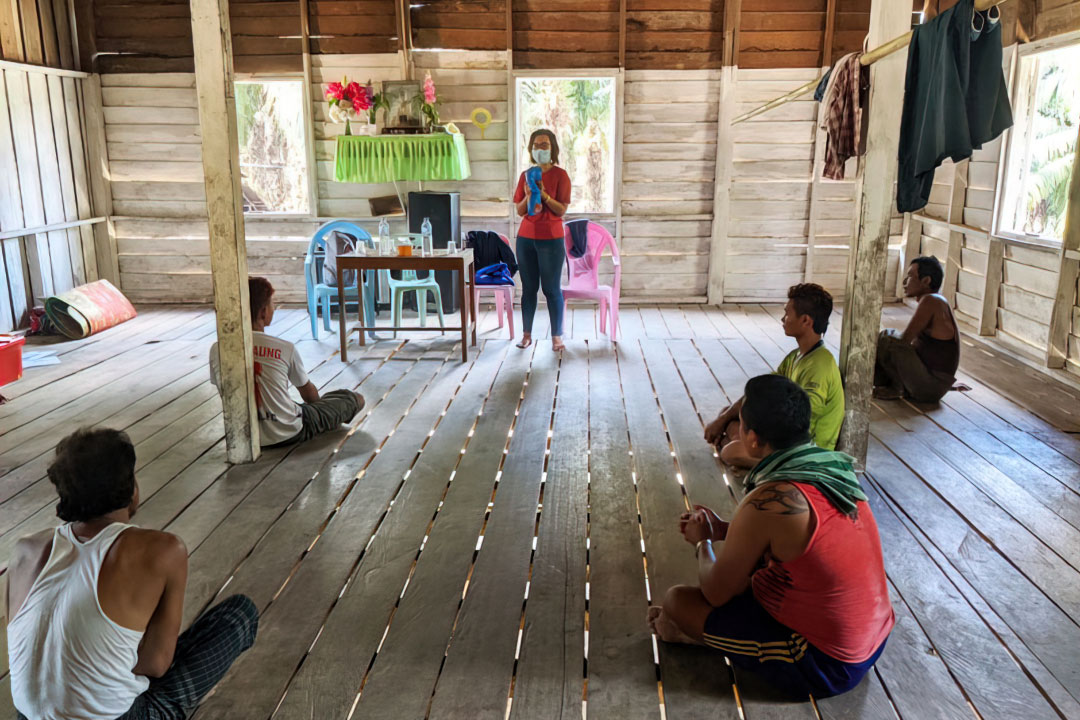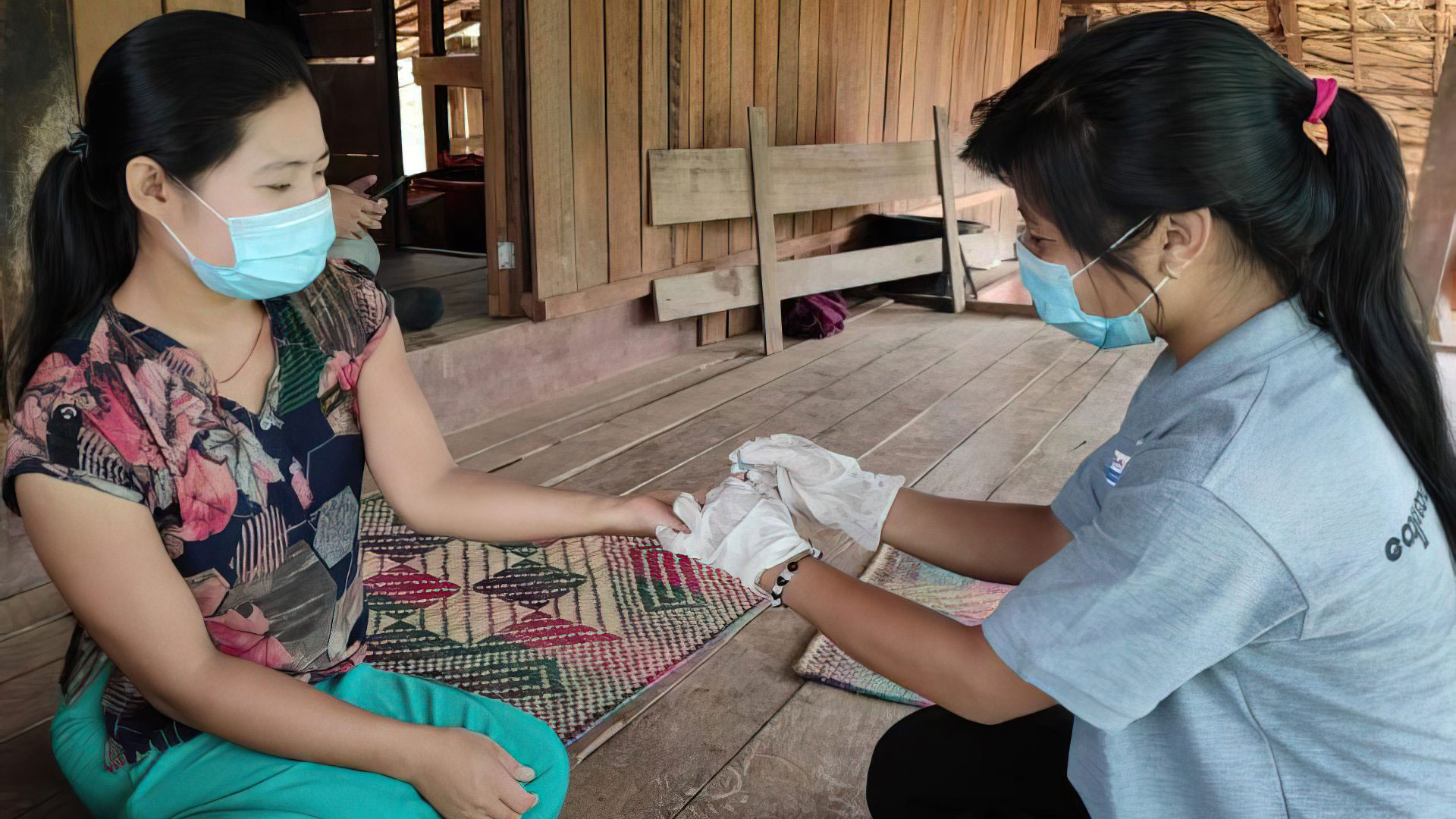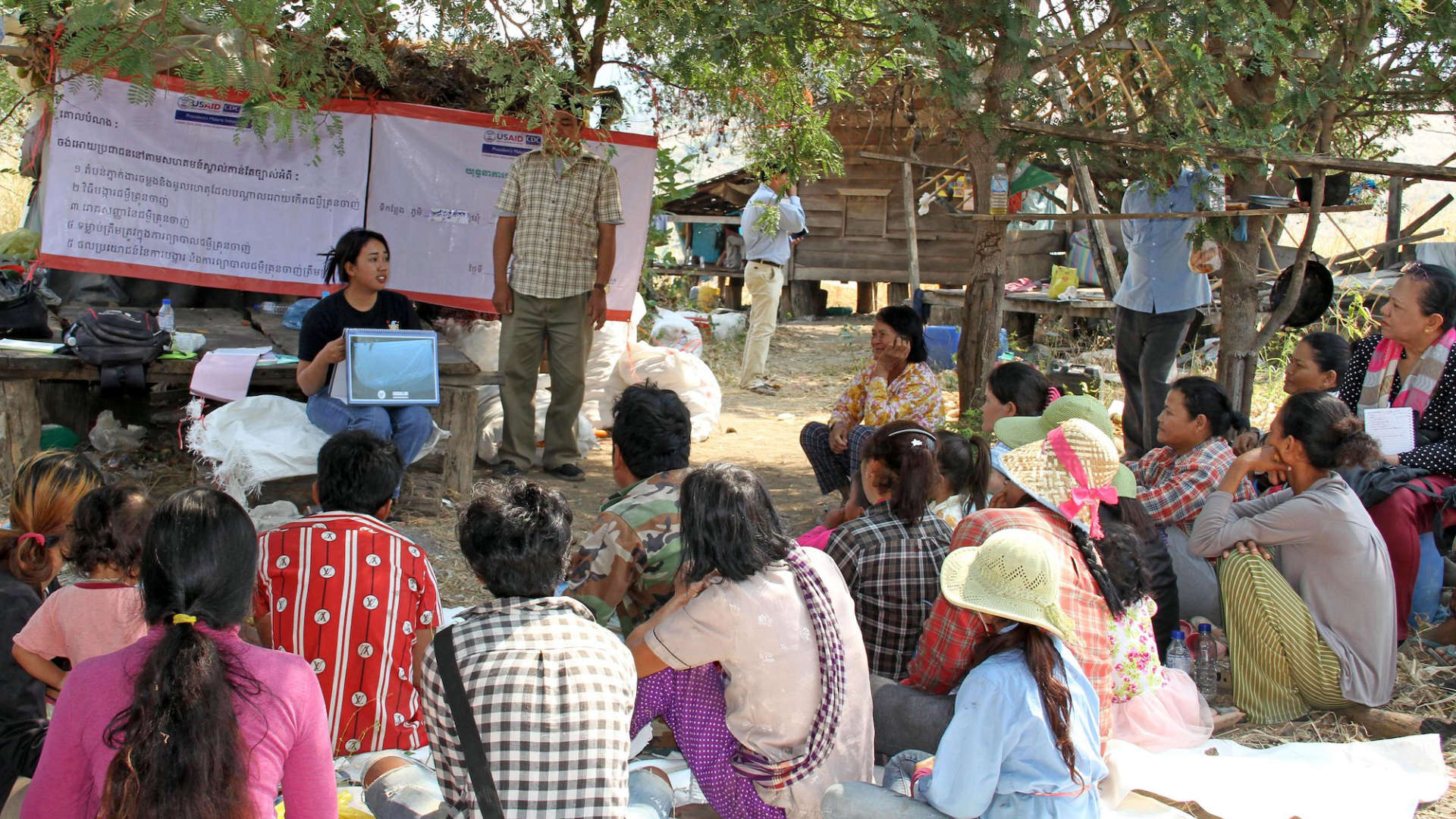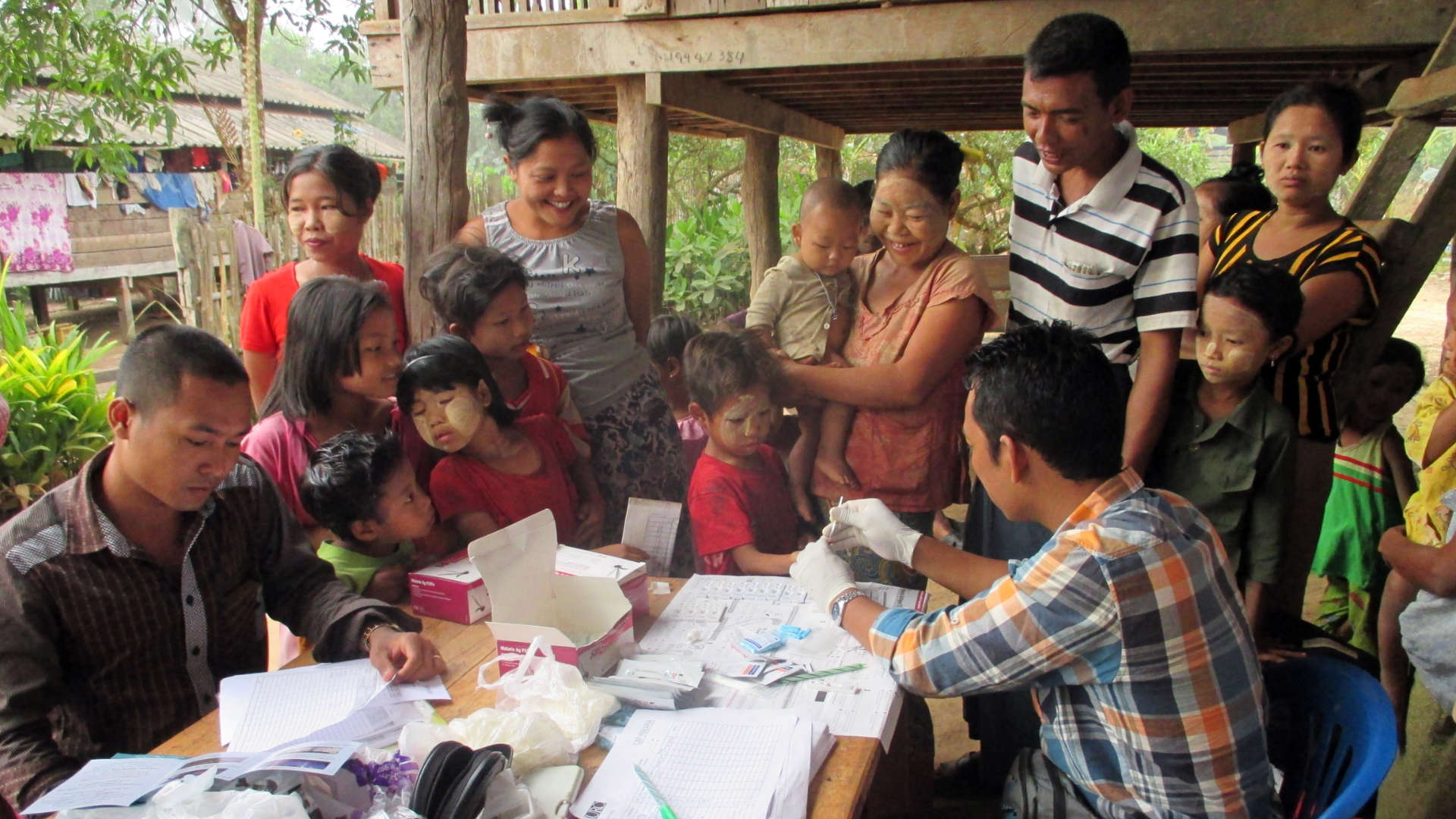As countries across the world are responding to the COVID-19 pandemic, URC continues efforts to prevent, detect, and treat malaria.
On World Malaria Day, observed April 25, URC reaffirms our commitment to the global fight to end the disease. URC is leading programs to prevent and treat malaria in Cambodia, Myanmar, and Uganda. Our research-driven malaria programs are working at multiple levels with contextualized approaches:
- In health facilities and in the community, we ensure providers have the necessary skills, medicines, and equipment for intermittent preventive treatment (IPT) during pregnancy and that there are accessible services for all vulnerable groups, including mobile/migrant populations, improved diagnosis through rapid tests and high-quality microscopy, and strengthened case management using artemisinin combination therapy and Primaquine administration for eligible patients;
- We work with all levels of government to promote, distribute, and hang long-lasting insecticide-treated bed nets, particularly hammock-treated nets for forest workers; and
- We strengthen surveillance systems with real-time notification and active responses and enhance procurement and logistics to ensure a reliable supply of high-quality drugs and diagnostics.
Helping Migrant Workers Avoid Malaria in Myanmar
Many people in Myanmar work outdoors in the mountains and in the forest, putting them at high risk of being bitten by infected mosquitoes. This population often is the most difficult to reach as they live, work, and travel in remote areas. Ensuring they are protected and receive proper treatment is a key to help control and eliminate malaria.
In 2019, the Defeat Malaria Activity, funded by the U.S. President’s Malaria Initiative and led by URC:
- Distributed 246,590 long-lasting insecticidal mosquito nets;
- Tested 267,153 people for malaria;
- Detected 3,354 malaria cases, referred 42 cases to health facilities, and treated to 3,291 cases in appropriately in 2,932 villages in 36 townships; and
- Reached 225,617 people with health talks on malaria prevention, trained 1,904 volunteers in how to combat the disease, and supported 3,014 on-site trainings for health workers utilizing the low dose high frequency capacity-building approach.
In March 2020, even with the rising threat of the COVID-19 pandemic, Defeat Malaria provided malaria prevention kits to 631 nighttime forest workers who sleep at forest work sites.
Cambodia Project Exceeds Malaria Elimination Goals
The USAID/PMI Cambodia Malaria Elimination Project (CMEP) is developing a scalable, evidence-based malaria elimination model to implement in project target areas and replicate across Cambodia. The project assists the country’s National Malaria Control Program manage, intensify, and sustain malaria control and elimination efforts and strengthen national malaria surveillance systems. CMEP, in its third year, achieved or exceeded its goals, including:
- 1-3-7 surveillance strategy activities were successfully implemented in five elimination operational districts (ODs). The 1-3-7 strategy aims for reporting of malaria cases within one day, their confirmation and investigation within three days, and the appropriate public health response to prevent further transmission within seven days. For 656 identified cases, 568 (87%) were notified within one day, 552 (84%) were investigated within three days, and 547 (83%) were responded to within seven days;
- 151,479 people were reached through interpersonal communication in elimination ODs and 143,644 people in transitional ODs; and
- 46,593 long-lasting insecticidal-treated bed nets (LLINs) and 30,798 long-lasting insecticidal-treated hammock nets were distributed in villages in elimination/transitional ODs.
Building Capacity to Prevent and Control Malaria in Northern Uganda
USAID RHITES-N. Acholi, is working to strengthen and improve the quality of malaria services by focusing on effective service delivery and prevention of the disease, especially among pregnant mothers and children under five.
Together with the Uganda Ministry of Health’s National Malaria Control Department, the project focuses on capacity building of health facility/district health workers, civil society organizations, and religious and cultural institutions. Emphasis centers on community mobilization and education on prevention, control, and elimination of malaria in the Acholi sub-region, which is endemic to malaria.
RHITES-N. Acholi has made remarkable contributions to malaria prevention and control by strengthening community participation and ownership towards elimination and mitigation, having:
- Tested 242,000 people for malaria during community outreach in six months, with 193,600 positives (80% positivity rate); all who tested positive received treatment from the project;
- Distributed 140,280 pieces of LLINs (66%) across eight districts of the Acholi sub-region;
- Improved uptake of IPT of malaria in pregnancy at 98% through establishment of directly observed treatment corners at 57% of supported health facilities; and
- Conducted malaria clinical audits at five high-volume hospitals in the region in collaboration with the National Malaria Control Department. Continuous medical education sessions on developing malaria time series charts help track malaria cases and possible upsurges in order to establish timely interventions and keep mortality below 1%.
Reducing the High Prevalence of Malaria in East Central Uganda
The East Central region of Uganda has the third highest malaria prevalence rate in Uganda. To reduce this high prevalence, the USAID Regional Health Integration to Enhance Services in East Central Uganda (RHITES-EC) works with the Ministry of Health’s National Malaria Control Program to support district efforts to prevent malaria during pregnancy and improve diagnosis and treatment of the disease in 12 districts.
The results are impressive. Amongst other accomplishments, the project has seen:
- An increase in adherence to the Uganda Ministry of Health malaria guidelines on “test and treat” from 55% at the start of project in October 2016 to 98% in March 2020;
- An increase in pregnant women receiving two or more doses of Fansidar for IPT of malaria from 30% at the start of the project in October 2016 to 60% in March 2020;
- Distribution of LLINs to over 300,000 pregnant women attending antenatal care at 350 health care facilities that offer antenatal care; and
- Strengthening of routine monitoring of antimalarial commodities that inform redistributions and submission of emergency and back orders to mitigate stockouts and ensure last mile delivery of malaria commodities to health care facilities.



